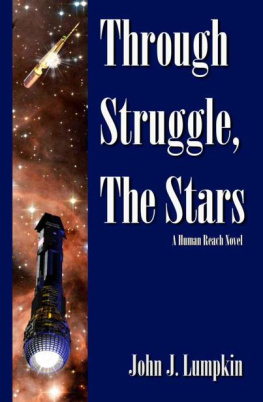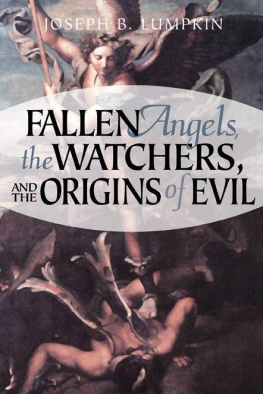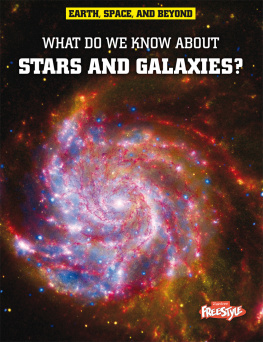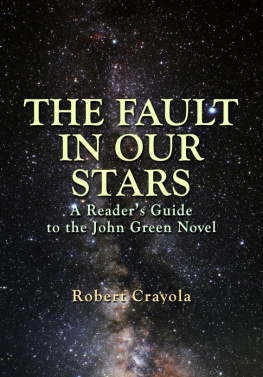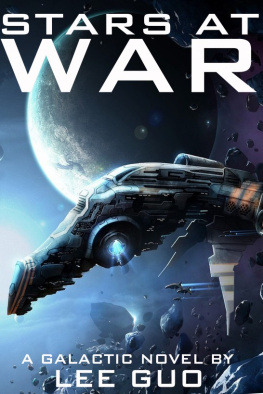John J. Lumpkin - Through Struggle, the Stars: A Novel of the Human Reach
Here you can read online John J. Lumpkin - Through Struggle, the Stars: A Novel of the Human Reach full text of the book (entire story) in english for free. Download pdf and epub, get meaning, cover and reviews about this ebook. year: 2011, publisher: CreateSpace, genre: Detective and thriller. Description of the work, (preface) as well as reviews are available. Best literature library LitArk.com created for fans of good reading and offers a wide selection of genres:
Romance novel
Science fiction
Adventure
Detective
Science
History
Home and family
Prose
Art
Politics
Computer
Non-fiction
Religion
Business
Children
Humor
Choose a favorite category and find really read worthwhile books. Enjoy immersion in the world of imagination, feel the emotions of the characters or learn something new for yourself, make an fascinating discovery.
- Book:Through Struggle, the Stars: A Novel of the Human Reach
- Author:
- Publisher:CreateSpace
- Genre:
- Year:2011
- Rating:3 / 5
- Favourites:Add to favourites
- Your mark:
- 60
- 1
- 2
- 3
- 4
- 5
Through Struggle, the Stars: A Novel of the Human Reach: summary, description and annotation
We offer to read an annotation, description, summary or preface (depends on what the author of the book "Through Struggle, the Stars: A Novel of the Human Reach" wrote himself). If you haven't found the necessary information about the book — write in the comments, we will try to find it.
Through Struggle, the Stars: A Novel of the Human Reach — read online for free the complete book (whole text) full work
Below is the text of the book, divided by pages. System saving the place of the last page read, allows you to conveniently read the book "Through Struggle, the Stars: A Novel of the Human Reach" online for free, without having to search again every time where you left off. Put a bookmark, and you can go to the page where you finished reading at any time.
Font size:
Interval:
Bookmark:
Through Struggle, the Stars
A Human Reach Novel
John J. Lumpkin
Through Struggle, the Stars is Copyright 2011 by John J. Lumpkin.
The cover art is copyright 2011 Winchell Chung.
All rights reserved.
The starry background for the cover image is credited to NASA, the ESA, and the Hubble Heritage-ESA Hubble Collaboration.
The right of John J. Lumpkin to be identified as the author of this work has been asserted in accordance with the Copyright, Designs and Patents Act 1988. No part of this publication may be reproduced, stored in a retrieval system, or transmitted in any form or by any means, electronic, mechanical, photocopying, recording or otherwise, without the prior permission of the publisher, except as permitted by fair use laws in the United States of America.
This is a work of fiction. All characters and events portrayed in this novel are either fictitious or are used fictitiously.
Published by John J. Lumpkin, 2011
v1.1
To Alice
Who Gave Me the Time to Try
I owe thanks for the help and encouragement of Winchell Chung, the cover artist and author of the incomparable Atomic Rockets web site, Joshua Akers, Claudio Bertinetto, Laserman 1st Class Luke Campbell, John Christensen, combat editor Mark Graves, so titled because he provided comments while stationed in a war zone, Matt Hudson, Robin Lumpkin, Jesse Messerschmidt, Stephen Rubin, Alice Srinivasan and Christopher Weuve. I am also grateful for the thoughts of Ken Burnside, co-author of the Attack Vector: Tactical game, Kraettli Epperson, Beth Fulton, Arius Kaufmann, Fred Kiesche III, Mark Linton, Bruce Lutz, Barry Messina, Vaughn Patania, A. Mark Ratner, Rick Robinson and Shannon Sindorf. I further owe thanks to my daughter Charlotte, whose contribution was being a good-natured baby while I completed revisions. The books Rare Earth by Peter D. Ward and Donald Brownlee and World-Building by Stephen L. Gillett made me smarter about many things, as did several of John G. Cramers articles in Analog magazine. The Sabre dropships noted in this novel are inspired by a real design by Reaction Engines, Ltd.
Details on the setting are available at www.thehumanreach.net .
Stephen Hawking, to the British Broadcasting Corp., November 30, 2006
The key lesson of the last two centuries is that humanity could indeed be wiped off the face of the Earth, with no appeal, no mercy, no reprieve. We learned it as we burned away our resources beyond our capacity to replace them. We learned it from the nuclear fires in Delhi and Grozny. We learned it when the Rock hit.
Just what did we learn? That humanity must leave its cradle and spread to the stars to ensure its survival and prosperity. We had work to do, to build the bridges to new worlds, but the reward, colonies like this one, has made us safer.
Now Americas children are on several planets, so an even bigger Rock will not wipe us out in a single stroke. We are safer, but not totally safe, for we humans remain a danger to ourselves.
Patrick Gonzales, United States Secretary of Colonial Affairs, inaugurating Liberty colony, August 4, 2137
The Bluegrass Cat was a modular container hauler, a design that had barely changed in fifty years a control deck and living quarters at the top and a fusion candle at the tail, connected by a long shaft, which mounted dozens of cargo pods, some of them rotating slowly around the ships axis. She was long, thin and ugly: a freight train in space.
Her cargo to Zhuxing, the Chinese colony world orbiting Zeta Doradus, had been precision tools manufactured only on Earth, and she was departing with a load of Zhuxings native version of blue-green algae. This particular species was neither blue-green nor algae, but the microbes, reddish under a microscope, played a similar ecological role. They were one of the most efficient natural photosynthesizers yet discovered, and, without them, Zhuxing would have been an uninhabitable wet rock. They would fetch a high dollar on some of the colony worlds where oxygen was wanting.
On this run the Cat carried a second cargo, two bored American intelligence officers who had spent the last sixteen days monitoring government communications on Zhuxing while the ship sat moored at an orbital freight terminal.
The Cat s American owners, sympathetic to Washingtons interests, provided free, no-questions-asked transit to government agents on some of its vessels. It was a secret arrangement, and a good one for both sides; U.S. intelligence agencies could quietly move around their people to foreign planets without setting up cumbersome front companies or relying on passenger liners, and the shipping line found itself deliciously free of certain regulatory pressures that its competitors faced.
The officers had been picked up from their station on Guoxing, an older Chinese world, three systems upstream toward Earth, and their time over Zhuxing had coincided with a visit to the surface by the Chinese premier. They came away with vast stores of intercepted communications related to his stay. The senior officer, a veteran spook named Donovan, was fluent in Mandarin, and he had gone through what seemed the most promising intercepts, but he had so far come up with mostly dry bureaucratic messages that didnt interest him in the least. The most compelling, in his opinion, was an unedited news recording of the premier giving a fiery speech in a hotel ballroom on the dangers of Japanese aggression. Its vehemence was exceptional; China and Japan, Earths top two powers by most measures, were locked in a cold war, but it was unusual to hear such a high-level official indulging in what could be only regarded as racist remarks.
The remaining intercepts would be for Earthside computers to decode and analyze in hopes of finding some useful tidbit that would provide the State or Defense or Colonial Affairs department some advantage, somewhere, somehow.
Only the officers had to get it home. Transmitting this much bulk data from a mere freighter through the wormhole communications relays back to Earth had some chance of attracting the Chinese governments attention. The network of artificial wormholes that allowed ships easy travel between the stars also served as the sole communications conduit between them. Buoys on either side of the wormholes received and transmitted vast amounts of information: News, sports scores, love letters and coded government transmissions all had to pass through them. While a starship would take months to traverse the expanding sphere of worlds accessed by the wormhole network, a message could cross it usually in less than a day, bouncing from one buoy to the next at the speed of light. But most buoys had government taps, monitored by software ostensibly looking for threats to national security. Zhuxing was several systems downstream from Earth, and all the buoys in between were under the authority of the government in Beijing. And without the chain of wormhole relays, transmitting a message home from Zhuxing through empty space would require a wait of 38 years.
So the data had to be hand-carried, and now the microbe-laden Bluegrass Cat was among a half-dozen ships waiting in line outside the Zeta Doradus wormhole, located in the leading Trojan point of the planets second moon. This was the wormhole that initially opened the system to colonization and ultimately led back to Earth. The other two wormholes in the system led to stars further out, where China hunted still more colony worlds for its cramped millions.
In the Cat s stateroom, the junior of the two intelligence officers, Rafe Sato, reflected that he would never get back the last six weeks, or the twelve more it would take to return to Earth. Rafe, whose roots were part Hispanic, part Japanese and all Californian, had known there would be drudgery on the job; stealing secrets was not as dramatic as the movies would have the masses believe. Hed spent most of the trip out on his computer, taking some refresher courses to keep his technical certifications up to date. After they orbited Zhuxing, Rafes chief role was to handle the comm intercept gear while Donovan told him where to listen.
Font size:
Interval:
Bookmark:
Similar books «Through Struggle, the Stars: A Novel of the Human Reach»
Look at similar books to Through Struggle, the Stars: A Novel of the Human Reach. We have selected literature similar in name and meaning in the hope of providing readers with more options to find new, interesting, not yet read works.
Discussion, reviews of the book Through Struggle, the Stars: A Novel of the Human Reach and just readers' own opinions. Leave your comments, write what you think about the work, its meaning or the main characters. Specify what exactly you liked and what you didn't like, and why you think so.

